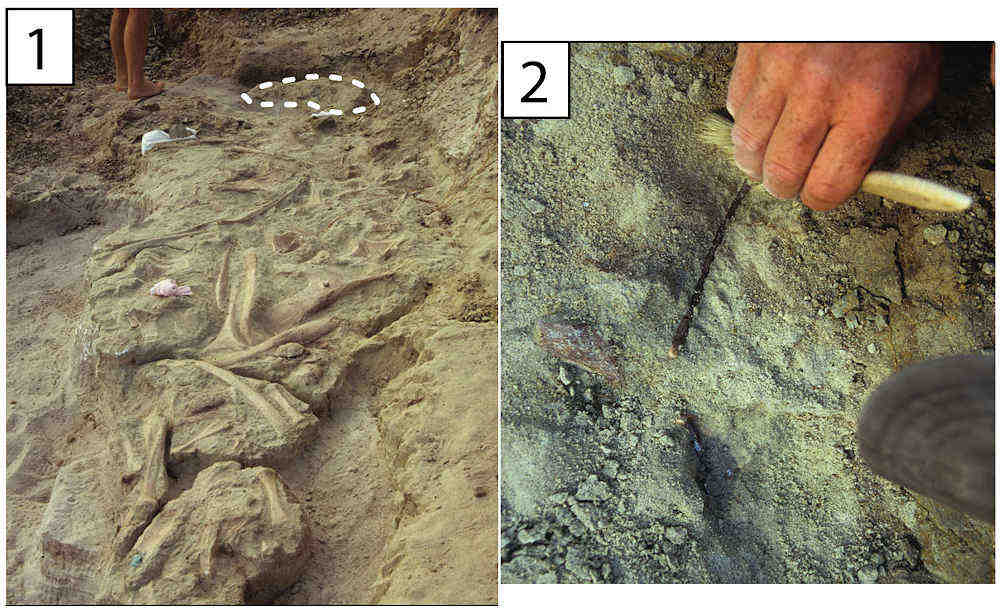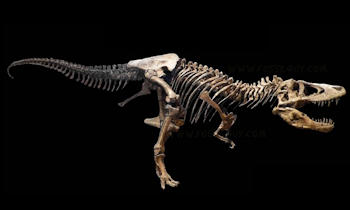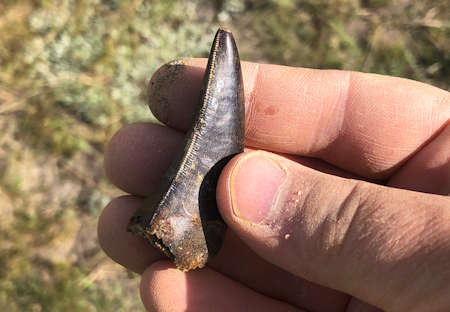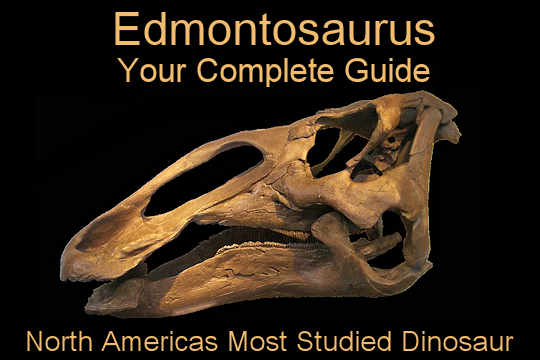Article written by: Jayson Kowinsky - Fossilguy.com
When Dinosaurs Could Fly
Introduction

Microraptor dinosaur flying models. This is part of figure 1 from Evangelista et al., 2014 showing microraptor gui models in wind tunnel test with various wing positions. The 'tent' posture (figure 1C) appears to be the most viable mode of flight. (CC BY 4.0)
Avians (birds) are dinosaurs. However, they weren’t the only flying dinosaurs. The evolutionary road to flight was far more complex than previously thought and there were in fact different groups of non-avian dinosaurs that independently developed flight multiple times. This article focuses on these non-avian flying theropods.
Pterosaurs are not Dinosaurs
First things first... Pterosaurs are not dinosaurs! They are flying reptiles that branched off early in the Mesozoic and developed flight while dinosaurs were just evolving. To learn about the remarkable diversity of Pterosaurs, check out my Pterosaur page.
Bird Evolution Overview

A fossil of the Early Cretaceous bird called Confuciusornis sanctus from China. This bird was one of the first birds to have a true beak. It also retained claws on its forelimbs. Credit: Tommy (CC BY 2.0)
Before we look at flying dinosaurs, we need to take a brief look at the evolution of birds, which are a branch of dinosaurs, the avian-dinosaurs. They branched from a group called the Dromaeosaurids, which are often called the raptors (think Velociraptor), sometime in the Jurassic period perhaps 160 million years ago.
Archaeopteryx
Archaeopteryx is the earliest known bird fossil. This iconic animal comes from Late Jurassic sediments (150 million years old) in Germany. Archaeopteryx is a black, raven sized bird that could fly, but wasn’t very aerodynamic and was a bit clumsy in flight. It has a mix of theropod traits, such as teeth, a long tail, fingers with claws, and the famous Dromaeosaur ‘killing claw’ on its foot. But it also has many bird traits… so many, in fact, that it’s clearly a bird. Archaeopteryx is not closely related to modern birds. Instead, it came from a different branch that went extinct in the Late Jurassic.
What Archaeopteryx shows is by 150 million years ago, birds were already diversified, meaning they must have branched from the Dromaeosaurid dinosaurs sometime before Archaeopteryx. Some estimates place the origin of birds around 160 million years ago.
Once birds appeared, they continued to evolve and diversify throughout the age of dinosaurs. By the Cretaceous, they filled the skies and were far more diverse than today. However, at the end Cretaceous extinction event around 66 million years ago, birds nearly became extinct with the rest of the dinosaurs. Fortunately, some members of a small group called the Neornithes survived. The Neornithes diversified into all modern birds that we see today.

Restoration of Archaeopteryx following Carney's 2011 feather coloration study, indicating that at least some of the feathers on the animal were black. Credit: NobuTamura (CC BY-SA 3.0)
Dinosaurs that were experimenting with flight
Dromaeosaurids - The Raptors

This is an illustration of Changyuraptor yangi, a 4 winged microraptorine dromaeosaur dinosaur. Changyuraptor had unusually long tail feathers which have been shown to generate lift, work as pitch adjustment during aerial motion, and aid in speed reduction during landings (Han et al, 2014). Image Credit: Emily Willoughby (CC BY-SA 4.0).
Since the Dromaeosaurid clade gave rise to birds, this group naturally shares many common traits with birds. Dromaeosaur dinosaurs have quill knobs, long flight feathers, hollow bones, a wishbone (which is crucial for flight), nesting behavior, a stiffened tail, and many other shared characteristics with birds. Some of these Dromaeosaurs continued experimenting with flight well after birds branched off. Here is an article if you want to learn about the Dromaeosaurs (raptors).
By the Cretaceous, there were whole clades of Dromaeosaurids experimenting with flight. These include the Microraptors, the Unenlagiines, and the Eudromaeosaurids. A study by Pei et al. in 2020 modeled various raptors and calculated wing-loading and specific lift to see which ones could attain powered flight. They found powered flight developed at least twice, while many others came very close. Some of these raptors look so similar to early birds that paleontologists often debate where to draw the line between Dromaeosaurids and birds.
Many of these Dromaeosaurids were able to climb trees, so they may have been arboreal (living in the trees), flying and gliding from tree to tree. While birds were limited to flying with just two wings, some groups of Microraptors grew long flight feathers on their legs, effectively making them 4 winged dinosaurs. While Microraptors lacked the forewing strength that modern birds have, the addition of a second set of wings and a long tail that has been shown to generate lift would have aided them in flight.
Pei et al., 2020 studied the lift and other aerodynamic characteristics of these dromaeosaurids and found three that passed most of the tests for powered flight; Buitreraptor, Changyuraptor (imaged above), and Bambiraptor. This means these three dinosaurs may have been able to fly, or at minimum, they could perform assisted leaps and glide. Pei et al. also found two dinosaurs that passed every test for powered flight, Microraptor gui, and Rahonavis. These two dinosaurs are discussed below.
Microraptor gui

This is figure 1 from Hone et al., 2010 showing the holotype of Microraptor gui (IVPP V 13352) in normal light. The white arrows show the preserved feathers. The scalebar is 5 cm. (CC BY 2.5)
While many Microraptor dinosaurs could at minimum glide, Microraptor gui has been shown to have achieved full powered flight. This is probably the most famous flying dinosaur. With four wings, Microraptor gui should have been a great flyer, but studies have shown this dinosaur was not very aerodynamic and had a high degree of drag (Evangelista et al., 2014). It was capable of flying, but it would not have been graceful; think of a flying chicken.
Since nothing today has four wings, the wing configuration of this dinosaur has been hotly debated. Studies have shown that it could not have splayed its wings out like a person in a glider suit, and an X-wing configuration would not have worked well either. Evangelista et al (2014) did wind tunnel simulations and found two configurations that could have worked. The first is a bi-plane configuration. However, Evangelista et al. says the bi-plane posture may not have been biologically realistic. The second more plausible configuration is called the 'tent' configuration, where the hind wings are more or less parallel to the long tail.
As for lifestyle, it’s assumed to have spent most of its time in the treetops. Not only would four wings get in the way of normal ground behavior, but they also had a claw on their arm which looks specialized for tree climbing. The diet is of no help to deduce where it lived; stomach contents from various individuals include a small mammal, a bird, a lizard, and a fish. Fish don’t live in trees...
.jpg)
Microraptor gui reconstruction. It's shown here in a leg drag posture, presumably preparing to land. This reconstruction shows a correct coloration. Melanosomes from the feathers indicate an iridescent blue-black coloration, similar to that of a crow. Credit: Fred Wierum (CC BY-SA 4.0)
Rahonavis

This is figure 1 from Forster et al., 2020 showing the location where The holotype of Rahonavis ostromi (UA 8656) was found. Surrounding the specimen are bones from a sauropod that were being excavated. (CC BY 4.0)
Rahonavis is an Unenlagiinae Domaeosaurid from the Late Cretaceous of Madagascar. It was discovered in 1995 while paleontologists were excavating the bones of a large Titanosaur. This 2-foot dinosaur fossil did not have soft tissue preservation, but it was found to have quill knobs on its ulna (arm bone). Based on the arm bones, Rahonavis had larger and more powerful wings than even the bird Archaeopteryx. Agnotin and Nocas (2013) suggested this dinosaur would fly similar to how bats fly. In 2020, Pei et al. showed Rahonavis was one of the few Dromaeosaurids that passed all aerodynamic and lift requirements for powered flight.
Rahonavis is a great example of the blurred lines between birds and Dromaeosaurids. Some studies have placed Rahonavis as a basil bird, while others have placed it in the Dromaeosaurid clade. As Forster et al. puts it, "The phylogenetic status of Rahonavis will likely remain as variable as the matrices developed to assess paravian interrelationships" (2020).

This is figure 41 from Forster et al., 2020. "Life reconstruction of Rahonavis ostromi based on the holotype (UA 8656) and referred specimens (FMNH PA 740, FMNH PA 746, and UA 9604). Known elements are colored in yellow." (CC BY 4.0)
The Bat Wing Dinosaurs - The Jurassic Scansoriopterygidae

Restoration of the membrane-winged scansoriopterygid Yi qi. Image Credit: Emily Willoughby (CC BY-SA 4.0).
The road to flight was full of interesting evolutionary experiments. One notable experiment comes from a Jurassic clade of dinosaurs called the Scansoriopterygidae. These tiny dinosaurs, discovered in China, evolved bat-like wings completely independent of the Dromaeoasurid dinosaurs. Although they had feathers, they did not have the long feathers of Dromaeosaurids. Instead, they had a bat-like membrane for the wings. Their hands were specially adapted with an elongated finger digit and a rod-like wrist bone that formed the bat-like wings.
This group of dinosaurs was recently modeled by Dececchi et al., 2020. They found these dinosaurs did not have the correct pectoral and sternum adaptations for flapping, nor did the wings have enough wing-loading force for powered flight. The aerodynamic studies showed this animal was on par with today’s gliding mammals. The type of claws and hindlimbs also suggest the ability to climb trees, so it was probably arboreal (tree dwelling) and would glide from tree to tree in the forest canopy, similar to some gliding mammals today (Dececchi et al., 2020). Examples of Scansoriopterygidae dinosaurs include Yi qi, Epidexipteryx hui, and Scansoriopteryx heilmanni. All of these dinosaurs were small. The largest was Yi qi, which had a wingspan of almost 2 feet, while the smallest, Scansoriopteryx was the size of a house sparrow.

Size comparison of the scansoriopterygids Yi qi (green), Epidexipteryx hui (orange), and Scansoriopteryx heilmanni (red), scaled based on the holotype specimens of each. Credit: Matthew Martyniuk (CC-BY-SA-4.0)
Conclusion
When you think of flying dinosaurs, don't just think of birds. There were many other strange types of flying dinosaurs. Some had 4 wings, while others had bat-like wings. Including birds, dinosaurs appeared to have evolved powered flight at least 3 independent times and produced many different types of gliders. As more fossils are found, I’m sure additional flying dinosaurs will be discovered.

Model of a Microraptor Gui - the flying 4 winged Cretaceous Dinosaur. The colors of this model are incorrect. Melanosomes from the feathers indicate an iridescent blue-black coloration, similar to that of a crow. Credit: Jason Adams (CC-BY-NC-SA-2.0)
Recommended Dinosaur Books and Educational Items:

High quality Dinosaur teeth by Fossilera
References / Works Cited
Agnolín, F.L. Novas, F.E. (2013) Avian ancestors. A review of the phylogenetic relationships of the theropods Unenlagiidae, Microraptoria, Anchiornis and Scansoriopterygidae. SpringerBriefs in Earth System Sciences. pp. 1–96.
Dececchi, T. Alexander; Roy, Arindam; Pittman, Michael; Kaye, Thomas G.; Xu, Xing; Habib, Michael B.; Larsson, Hans C. E.; Wang, Xiaoli; Zheng, Xiaoting (2020) Aerodynamics Show Membrane-Winged Theropods Were a Poor Gliding Dead-end. iScience, vol. 23, issue 12, p. 101574. DOI: 10.1016/j.isci.2020.101574
Evangelista D, Cardona G, Guenther-Gleason E, Huynh T, Kwong A, Marks D, Ray N, Tisbe A, Tse K, Koehl M. (2014) Aerodynamic characteristics of a feathered dinosaur measured using physical models. Effects of form on static stability and control effectiveness. PLoS One. 2014 Jan 15;9(1):e85203. DOI: 10.1371/journal.pone.0085203
Forster, O'Connor, Chiappe and Turner (2020) The osteology of the Late Cretaceous paravian Rahonavis ostromi from Madagascar. Palaeontologia Electronica. 23(2):a31. DOI: 10.26879/793
Hone DWE, Tischlinger H, Xu X, Zhang F.M. (2010) The Extent of the Preserved Feathers on the Four-Winged Dinosaur Microraptor gui under Ultraviolet Light. PLoS ONE 5(2): e9223. DOI: 10.1371/journal.pone.0009223
R. Pei, M. Pittman, P.A. Goloboff, T.A. Dececchi, M.B. Habib, T.G. Kaye, H.C.E. Larsson, M.A. Norell, S.L. Brusatte, X. Xu (2020) Powered flight potential approached by wide range of close avian relatives but achieved selectively. bioRxiv 2020.04.17.046169. DOI: 10.1101/2020.04.17.046169






 Paleoadventures Dinosaur Digs
Paleoadventures Dinosaur Digs







